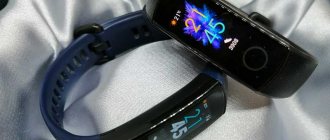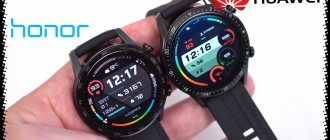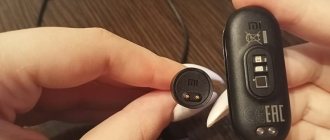01.03.2021
Oxygen is involved in the formation of 90% of the energy produced by the body. It is necessary for the chemical reactions of breaking down food molecules and releasing energy from them for the functioning of all organs and systems of our body. Saturation is an indicator that determines the level of oxygen saturation in the blood. The normal level of oxygen saturation in the blood in adults is 94-99%. If the value drops below, the person experiences symptoms of hypoxia, or oxygen deficiency. In this article we will look at how to determine the level of oxygen saturation and what doctors do when the levels are critically low.
Saturation is measured as a percentage. They mean the ratio of the number of hemoglobin molecules to the total number of molecules in combination with oxygen. There are two measurement methods:
- SaO2 is a reference to true oxygen saturation, which is measured by arterial blood test.
- SpO2 is the saturation measured using a non-invasive method such as a pulse oximeter.
How is saturation measured?
The level of oxygen in the blood is one of the key indicators in diagnostics around the world. Saturation is easy and quick to measure: the procedure takes from 10 seconds to a minute, and inexpensive and compact pulse oximeters are used for this. A decrease in blood oxygen levels may indicate:
- respiratory diseases (pneumonia, pneumonia, tuberculosis, bronchitis, lung cancer, etc.);
- violations of the quantitative composition of the blood (lack of red blood cells or hemoglobin);
- heart defects (coronary heart disease, congenital defects, infectious valve damage, etc.).
Other causes of low blood oxygen saturation in adults include excess weight and smoking.
How does oxygen get into cells?
Our blood is 40% cells and 60% plasma (a light liquid containing water, salts and minerals). The bulk of cells in the blood are erythrocytes or red cells, their approximate number reaches 25 billion or 99% of all blood cells.
All red blood cells include many hemoglobin molecules, which bind to oxygen, carrying it throughout the body. That is, hemoglobin plays the role of a “taxi driver” in this cycle. Its task is to transport oxygen and enrich all tissues with it. As blood moves through the lungs, hemoglobin takes oxygen from there and transfers it to other areas, taking carbon dioxide from there and leaving it in the lungs for exhalation.
However, not all hemoglobin molecules perform their task conscientiously. Some may simply not take a new “passenger” and not carry oxygen, but simply ride along the entire route empty. SpO2 shows us the ratio of hemoglobin with oxygen to the total number of hemoglobin molecules in the blood.
How do pulse oximeters work?
To determine whether oxygen saturation in the blood is normal, a test device similar to a clothespin is used. The pulse oximeter is attached to your finger, after which the device passes a beam of light through it. There are light-emitting diodes at one end of the device and meters at the other. Due to the ability of hemoglobin to absorb light, blood saturated with oxygen has a different color. The photodetector records the measurements and instantly displays them on the screen. You can make sure that an adult’s oxygen saturation level is normal using the latest versions of fitness bracelets and smart watches: they take measurements in a similar way, but are less accurate.
To get reliable readings, you need to sit down and relax. The pulse oximeter sensor should be located at the base of the nail. You cannot move your hand while determining saturation. A sound signal indicates that the device has completed diagnostics. In order for the diagnosis to be as accurate as possible at a critical moment, it is advisable to know your oxygen saturation rate - for example, take measurements at different times of the day: immediately after sleep, after eating, during work, etc.
What is saturation
Lung saturation is a term that is an indicator of the level of oxygen saturation in the blood.
Despite the constancy of the visible respiratory process, the intake of life-giving gas into the body can decrease and worsen the well-being and capabilities of the body.
What's important here is why exactly oxygen levels are being monitored. The substance is directly involved in obtaining about 90% of all energy generated by the body. Oxygen carries out the transfer of molecules that feed cells in order to obtain energy when processed during life. Therefore, when its level drops, the entire body suffers.
determination of saturation norm
Quantitative assessment of saturation - percentages, indicating the number of individual hemoglobin molecules compared to the total number of molecules interacting with O2 (the designation of oxygen in chemistry).
There are 2 methods of obtaining the indicator:
- in absolute value – SaO2 (analysis of a blood sample by laboratory method);
- non-invasively, without obtaining a sample - SpO2 (with a special device).
The latter method is used everywhere due to its speed and safety, as well as the absence of a time gap for research in the sometimes critical condition of the patient.
The non-invasive method (from the English invasion - immersion) involves the operation of a device called a “pulse oximeter”. It is attached to your finger and turned on - this takes just a few seconds due to its similarity to a clothespin. After collecting information and analyzing it, lasting no more than a minute, the result is shown on the screen.
pulse oximeter - measurement of blood saturation
The principle of operation is to capture the color spectrum when illuminating blood. With less oxygen content in it, the color will definitely change.
Ambulance teams must have this device in their kit. It takes up little space, weighs almost nothing and is inexpensive.
The essence of the measurements is the same for medical devices and popular electronic sports bracelets. The latter have much less accuracy, but they are also tuned to track hue.
Optimal oxygen saturation indicators
There is an average rate of oxygen saturation in adults when measured with a pulse oximeter. The average values are shown in the table:
| Patient's condition | Indicators |
| Normal oxygen saturation in an adult | More than 95% |
| Respiratory failure 1st degree | 90-94 % |
| Respiratory failure 2nd degree | 75-89 % |
| Respiratory failure 3rd degree | Less than 75% |
| Hypoxemic coma | Less than 60% |
It is important to note that the situation will be different for newborn children. Infants have poorly developed lungs and little iron in the body, so oxygen saturation of 98% and below, down to 92%, is considered normal. In premature babies, saturation can drop to 82%: in this case, artificial ventilation is used.
How to determine
The SPO2 norm in adults is determined using 2 main methods. This is a measurement of saturation using a pulse oximeter or laboratory blood test.
Pulse oximetry
Pulse oximetry is a non-invasive way to diagnose the level of oxygen saturation in the blood. This type of instrumental research is based on the spectrographic method for determining saturation.
The conduct of this survey is as follows:
- The patient is in a sitting or lying position on the couch.
- The healthcare worker places the pulse oximeter on the index finger of the subject's dominant hand.
- After this, the doctor or nurse presses the start button on the pulse oximeter control panel.
- Within 3-5 s, 2 digital values will appear on the monitor.
- The top number shows the percentage of oxygen in the blood, and the bottom number indicates the heart rate.
A prerequisite for determining saturation using pulse oximetry is that at the time of measurement manipulations, the dominant hand should not be in a suspended state. The upper limb should be placed on the bed or surface of the manipulation table.
This type of diagnosis can be carried out independently, at home. To do this, it is enough to purchase a pulse oximeter, the average cost of which is from 1200 to 1650 rubles. depending on the manufacturer.
Laboratory research
To carry out laboratory diagnostics of saturation levels, the patient’s venous or arterial blood is used. In this case, 5 to 10 ml of biological material is sufficient. Blood sampling takes place under sterile conditions using disposable consumables.
The results of laboratory testing are known 1-2 days after the collection of biological material. In emergency cases, faster diagnosis is possible. For example, if the patient is in serious condition. Laboratory testing for blood saturation levels is carried out free of charge as part of providing emergency medical care to the patient.
What to do if oxygen saturation is low
The causes of low oxygen saturation are not always associated with any diseases. For example, the indicator can drop to 92-94% during intense sports, when there is simply not enough oxygen due to high loads.
In addition to low saturation, hypoxemia can manifest itself as increased heart rate and breathing, drowsiness, pale skin, decreased blood pressure, weakness and dizziness. A person may notice an increased level of anxiety and insomnia. If hypoxemia worsens, then anaerobic processes begin in the cells, accompanied by the release of large amounts of harmful substances. Shortness of breath, respiratory failure, tachycardia, swelling of the lower extremities, fainting, tremor, and bluish skin appear.
If the reasons for the decrease in oxygen saturation are known, then first of all doctors work to treat this condition. For minor hypoxia, oxygen canisters are used: they allow you to quickly saturate the blood with oxygen and immediately improve your well-being, but do not in any way affect the root cause of oxygen deficiency. As a rule, such therapy is used if the deficiency is caused by high physical activity, chronic diseases of the bronchi and lungs, and recovery from infectious diseases.
If oxygen saturation levels drop to 94%, this is a reason to consult a doctor. However, doctors will make treatment decisions based on other symptoms. For example, for mild cases of COVID-19, pulmonologists will recommend home treatment using oxygen tanks and placing the patient on the stomach in a prone position to relieve symptoms of hypoxemia. However, if the saturation is below 95% and at the same time the patient has a high temperature, shortness of breath, wheezing, he requires hospitalization and, possibly, oxygen therapy.
SpO2 normal for adults and adolescents
SpO2 norms for an adult or teenager:
- The saturation level in a healthy person is 95%–99%.
- Range from 90 to 94% - there is slight hypoxia or lack of oxygen.
- From 86 to 90% is an average lack of oxygen.
- All other values (less than 85%) indicate severe hypoxia, which requires emergency medical care.
How to connect the Honor Band 5 fitness bracelet to your phone: instructions
To prevent the body from experiencing stress and oxygen deficiency, when playing sports, the saturation indicator should not fall below 92 percent.
What level of oxygen saturation in the blood is critical?
Because low oxygen saturation can be caused by a variety of diseases, there is no uniform requirement for when oxygen therapy should be started. Doctors assess the patient's condition, and if they see a medical need, they help him with medications or oxygen therapy.
At what saturation is oxygen given? The correct answer depends on the exact reason for its deficiency. Let's look at the recommendations of experts for the treatment of patients with coronavirus.
| Saturation level | Measures taken by the doctor |
| Below 92% | The patient receives oxygen using an oxygen concentrator. Masks or nasal catheters/cannulas are used to supply the gas mixture. |
| Below 85% | The patient is taken to intensive care. Non-invasive or invasive ventilation is used. |
| Below 80% | The patient is connected to a ventilator. If problems arise with mechanical breathing, the patient may be put into an artificial coma. |
It is important to note that in life-threatening conditions, saturation is not the main criterion when deciding whether to connect a patient to mechanical ventilation. Much more important are the indicators of gas exchange in the blood, the degree of lung damage, etc.
How to measure SpO2 on a fitness bracelet?
If previously you had to purchase special devices that could monitor SpO2 readings, now it is enough to get a Band 5 fitness bracelet and monitor important vital signs through a program on your smartphone.
Measurement Instructions
The measurement instructions require that you fulfill a mandatory condition - do not move. That is, while the device is detecting your pulse, your hand should be stationary on the surface. If you do not comply with the requirements, the bracelet will not run a check, but will only ask the user to stop moving.
If you have any questions or complaints, please let us know
Ask a Question
- To manage the option, install the application on your phone - Huawei Health or Samsung Health.
- Find SpO2 in the list of available functions and click on the “Measure” button.
- The device will begin measuring your heart rate and oxygen saturation. You will see the result on the monitor.
Honor manufacturers remind you that the fitness bracelet is not a medical device and should not be used to diagnose your body. All results obtained may be used for reference only.
Can these indicators be trusted?
Experts say that you can trust the performance of smart watches. The process of measuring hemoglobin oxygen saturation is completely identical to the pulse oximeter used in medicine. Principle of operation:
- The built-in sensor emits light that penetrates the tissue, then reflects and shines on the photodetector.
- Some of the emitted light will be absorbed by the blood.
- This amount will demonstrate the current level of oxygen saturation.
A smart bracelet works on the same principle. It includes the same sensor with a photodetector.
Smartphones can also measure SpO2; for example, Samsung developers have implemented this function in some flagships from the Galaxy S series.
Honor Band 6: release date, review, specifications, price
Alternative methods for bringing oxygen saturation levels back to normal
The main method of therapy for hypoxemia is oxygen support. However, there are also auxiliary ways to help the body.
Medications
They are usually used to increase hemoglobin and general strengthening. Antihypoxants that normalize redox processes in tissues, anticoagulants that prevent the formation of blood clots, drugs to lower blood pressure (prevent pulmonary edema), and infusion therapy to improve blood flow may be useful for treatment. How general strengthening agents are used:
- preparations with iron;
- preparations with magnesium;
- folic acid;
- cyanocobalimin;
- B vitamins;
- ascorbic acid;
- vitamin complexes.
Breathing exercises
In order for saturation to return to normal and blood saturation with oxygen to occur without pathologies, doctors recommend doing breathing exercises. It will be useful after any severe respiratory illness. It can be used when the patient does not have shortness of breath and the temperature has subsided. The main purpose is to stimulate blood circulation, increase the elasticity of lung tissue and strengthen the respiratory muscles. You need to exercise, gradually increasing the duration of exercises from 5 to 15 minutes. Pulmonologists recommend the following exercises:
- Lying on your back, inhale through your nose for three counts, then make a long exit for five counts.
- We sit down on a chair and lower our hands. As you inhale, raise your straight arms above your head, palms up, and as you exhale, slowly lower them.
- We stand with our arms bent at the elbows, hands on our shoulders. As you inhale, spread your arms out to the sides for three counts, then slowly exhale through your mouth, pursing your lips into a tube. At the same time, we place the hands behind the shoulders.
What is pulse oximetry
Oxygen is an element without which the life of an organism is unthinkable. It is involved in many biochemical reactions. The air entering the human lungs consists of a nitrogen base, admixtures of various gases and approximately 21-23% oxygen. Oxygen molecules bind to red blood cells and are transported through the flow of enriched arterial blood to the organs. An important indicator of a person’s well-being is the normal level of oxygenation; it is indicated by the following letter sequence - SaO2, where Sa is saturation, O2 is oxygen. The procedure for measuring this indicator is called pulse oximetry; for this, a microprocessor device is used - a pulse oximeter.
The procedure does not require any intervention, puncture or catheterization; to determine the value of blood saturation, only contact with the skin is necessary. The device is a kind of clamp that is attached to a finger or earlobe. There are pulse oximeters with mounts that are fixed on the forehead or other part of the body. The operation of the device is based on the ability of hemoglobin to absorb light waves of a certain length. The fact is that hemoglobin bound to oxygen molecules absorbs waves of a certain frequency differently than unbound hemoglobin. The sensor emits infrared and red waves, which are absorbed by the blood to varying degrees. The emitted light beam passes through the skin, is reflected and captured by a photodetector. Depending on the degree of oxygen saturation of the blood, the spectrum of reflected light will be different. The received data is processed by the built-in processor and displayed on the display.
They allow us to understand how effective breathing and good blood circulation are in a person.
The device records the following readings:
- Saturation. Deviations from normal values indicate the occurrence of health problems, in particular with the cardiovascular or respiratory system. It is important that the problem can be detected before the primary symptoms occur. A lack of oxygen in the blood, for example, may be indicated by bluish skin, weakness, or changes in heart rhythm.
- Pulse rate. Determines heart rate. It should be noted that the use of a pulse oximeter helps to identify some abnormalities in the functioning of the heart, but the data obtained cannot replace the results of a full electrocardiography procedure. To obtain more accurate information, it is recommended to monitor for several minutes, and not 10-20 seconds, as the instructions for use say.
The use of the device is absolutely safe, since only light radiation is used, there are no contraindications. A pulse oximeter helps identify hypoxia, that is, insufficient oxygen supply to tissues, due to low oxygen levels in the blood. However, the device will not provide reliable data in case of any other abnormalities, for example, in case of disturbances in blood flow to the organ. Also, the device will not show whether there is enough hemoglobin in the blood.
Natural ways to oxygenate your blood
There are general recommendations that will be useful not only for people with low saturation, but also for healthy people. It is necessary to ventilate the premises well, regularly go for walks, preferably in the forest, where the oxygen content in the air is higher than in the city.
A good alternative for patients who are unable to walk due to weakness, old age or distance from green areas is the use of oxygen cylinders. Prana products contain a mixture with an oxygen content 4 times higher than in the atmosphere. This gas does not dry out the airways, saturates the blood with oxygen in a matter of seconds and improves the patient’s well-being.








